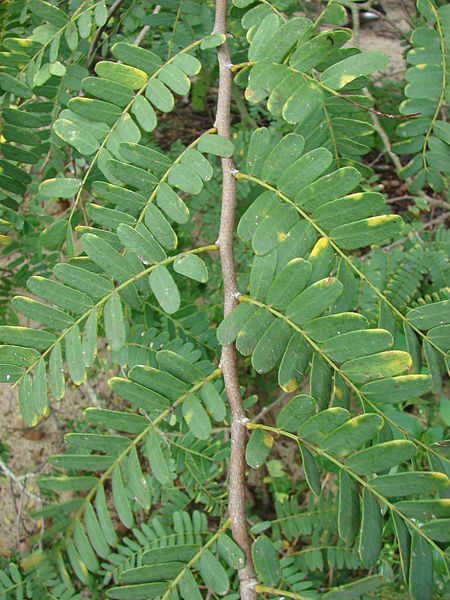Tamarindus Indica
Family : Leguminosae-Caesalpinioideae
Common Name : Tamarind Tree
English Name : Tamarind Tree
Hindi Name : Imli
Telugu Name : Chinta
Bengali Name : Amli
Tree Characteristics :
Tamarind is a long lived and beautiful fruiting tree, growing up to 30 metres tall with a dense, spreading crown. The tree has fragrant flowers and a feathery foliage that is usually evergreen but becomes deciduous in drier regions. The bole is usually short, 1 - 2 metres in diameter. The seedpod of the tamarind is widely used for food in the tropics. The tree also yields a number of other edible uses, as well as having a wide range of medicinal applications and other uses.
Nursery:
Pods are collected during March to April from the branches . The pods are dried in the sun after removal of the shell, kneaded by hand and washed in water to separate the seed which is later dried in the shade and stored. The viability is retained for more than one year.
No. of seeds per Kg – 1800 to 2600. Seed - when dried, it retains viability for several years at ambient temperatures. Pre-soak the seed for 24 hours in warm water and sow in a nursery seedbed or containers at 21°c. About 90% germination is achieved in 40 - 50 days. Germination is best when seeds are covered by 1.5 cm loose, sandy loam or by a mixture of loam and sand. The seedlings quickly develop a taproot and so should not be allowed to grow in a nursery seedbed for more than 4 months before being transplanted into containers. Seedlings should attain at least 80 cm before being transplanted to their final location at the beginning of the rainy season.
Economic Uses :
Seedpod - raw or cooked. An acid flavour.
Harvested when fully grown but still green and tender, they are used as a seasoning and also to make juices and paste.
The immature pods are used in a variety of ways, being eaten fresh mixed with spices, pickled like green mango, or added whole to soups, stews and sauces.
The pods are 5 - 15cm long. When fully mature, the pods contain a sticky paste which can be eaten raw, used to make drinks, jellies, syrups etc. This paste is usually quite sour due to its content of tartaric, acetic and citric acids, though sweet forms can also be found/ Very Rich and cheap source of Vitmain C.









